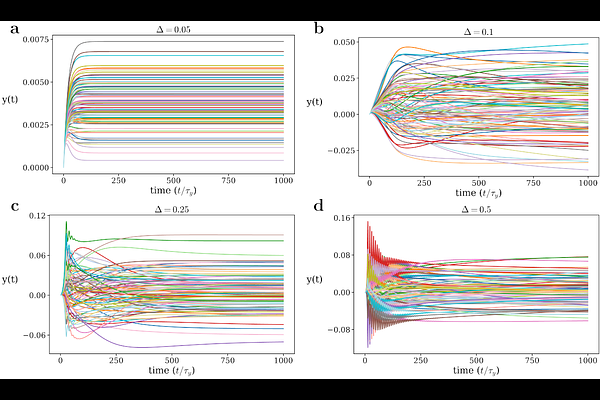Stabilization of recurrent neural networks through divisive normalization

Stabilization of recurrent neural networks through divisive normalization
Morone, F.; Rawat, S.; Heeger, D. J.; Martiniani, S.
AbstractStability is a fundamental requirement for both biological and engineered neural circuits, yet it is surprisingly difficult to guarantee in the presence of recurrent interactions. Standard linear dynamical models of recurrent networks are unreasonably sensitive to the precise values of the synaptic weights, since stability requires all eigenvalues of the recurrent matrix to lie within the unit circle. Here we demonstrate, both theoretically and numerically, that an arbitrary recurrent neural network can remain stable even when its spectral radius exceeds 1, provided it incorporates divisive normalization, a dynamical neural operation that suppresses the responses of individual neurons. Sufficiently strong recurrent weights lead to instability, but the approach to the unstable phase is preceded by a regime of critical slowing down, a well-known early warning signal for loss of stability. Remarkably, the onset of critical slowing down coincides with the breakdown of normalization, which we predict analytically as a function of the synaptic strength and the magnitude of the external input. Our findings suggest that the widespread implementation of normalization across neural systems may derive not only from its computational role, but also to enhance dynamical stability.